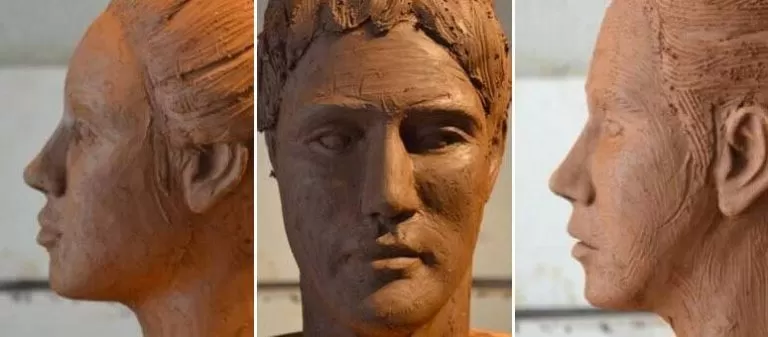


However, in recent years, all interventions related to facial aging have begun to be referred to as facial rejuvenation. As people age, the skin of the face sags, wrinkles, and various spots and irregularities appear on it due to the effects of years, sunlight, daily stresses and other factors (smoking, drinking, malnutrition). On an aged face; forehead lines become prominent, eyebrows fall, eyelids sag, bags and lines form under the eyes, deep lines form in the mouth – nose area, cheeks sag, chin contours disappear, neck is oily and skin curtains are formed. The skin has lost its vitality, sun spots and other moles have appeared on it, it has become thinner and wrinkled.
Facelift surgery, one of the plastic and aesthetic surgery operations, is also known as “face lift” or “rhytidectomy” in English. With facelift-replacement surgeries, sagging and irregularities in the skin of the forehead, face and neck are eliminated; excess fat tissue in the cheeks and neck is removed, facial fascia and fat tissues are pulled and suspended in their anatomical places, facial tissues are reinforced, eyelids are corrected and other complementary interventions can be performed (such as peeling-peeling, filling and botox).
During the interview, your current complaints and your expectations after the operation are evaluated.
During the facelift operation, nose and eyelid aesthetics, forehead correction, brow lift surgeries can also be added to make the face look more beautiful and younger. Injection of fillers (fat, hyaluronic acid, etc.) or peeling (mechanical, chemical, laser) for fine wrinkles and Botox for wrinkles can be performed.
When you decide on the operation, my assistant will plan the appropriate operation day for you.
Aspirin and derivative drugs are discontinued one week before the operation (do not discontinue your regular medication without consulting your doctor)
It is recommended not to smoke for a period of time before and after the operation.
On the day of the operation, do not use hair gel, wear comfortable clothes and leave your jewelry at home.
Nothing should be eaten or drunk 6 hours before the operation.
You should be at the hospital about two hours before the operation.
When you arrive at your reserved room, you will be given an oral medicine if you wish, which will relax you.
Facelift surgery is not scarless. However, these scars are not obvious because they are hidden. The scars are hidden in the scalp in the temporal region, in front of and behind the ears. If the fat in the under-chin area is removed, a 3-5 mm scar remains under the chin, and if eyelid and forehead lift is added, additional scars remain in the eyelids and forehead in the scalp. However, these scars on the face are mostly not obvious and can be hidden. Additional procedures (nose, eyelid, etc.) can be performed in the same session.
It can be performed with local anesthesia accompanied by general or intravenous sedation (tranquilizers).
It is possible to go home the same day, but a 1-night hospital stay is usually appropriate. There may be general swelling, discoloration, numbness and a feeling of tension in the face. Since facial nerves may be slightly affected by anesthesia during surgery, there may be slight asymmetries in the face. These will resolve spontaneously within 3-5 days. A head bandage is applied, leaving the eyes, nose and mouth open. In order to prevent blood accumulation in the tissue, silicone tubes called resistors may be placed. The resistors are removed within 2 days at the latest. The dressing is completely opened after 2-3 days. General control and dressing change is performed. Hair can be washed during this period. If the sutures are not dissolving type, they are removed after 5-7 days. Rarely, second corrections may be necessary. From the 2nd postoperative day, the patient can stand up and do his/her chores at home. The patient can return to work and apply make-up after a week when the swelling subsides.
For 2 months, it is recommended to avoid heavy exercises and excessive sunlight, and to protect from external impacts. The new shape given to the skin of the face and neck sometimes lasts for 5-10 years, sometimes for life, depending on the person’s structure and environmental conditions.
After the third week, you become more aware of the approximate new shape that the operation has given your face and start to enjoy it.
It takes its final shape approximately 6 months-1 year after the operation.
Facial rejuvenation operations
– Forehead lift – brow lift
– Cheek (mid-face) lift
– Neck lift
– Liposuction
– Eyelid aesthetics (blepharoplasty), Rhinoplasty
– Other corrective surgeries (removal of skin lesions, dermabrasion etc.)
Facial rejuvenation aesthetic interventions
– Fat injection: For lip, cheek and facial contours
– Filler injections: For wrinkles, lips and minor irregularities
– Peeling procedures (Chemical peeling, Mechanical peeling=dermabrasion, Laser peeling)
– Botox: For skin wrinkles




Copyright © 2026 Tüm Hakları Saklıdır.
SEO:
